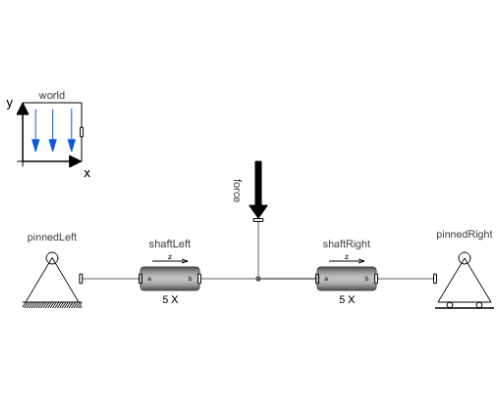WOLFRAM SYSTEM MODELER
CarAxleInspection of an axle's vibrations |
|
Diagram
Wolfram Language
SystemModel["RotatingMachinery.Examples.Shafts.CarAxle"]
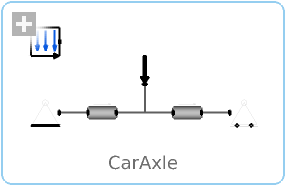
Information
Study of Car Axle
This example inspects the vibrations of a car axle. In this case, its rotation is not important, so it is modeled as a beam; see Figure 1. The force applied at the middle of the beam can be considered as the initial kick of the engine or a bump encountered while driving.
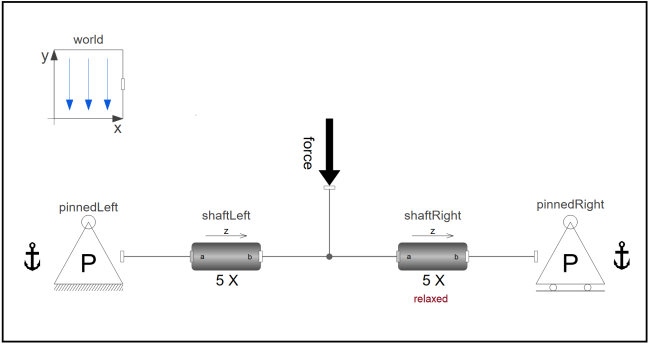
Figure 1: Car axle model.
The CarAxle model has two supports, which result in an over-determined system. As noted in the Getting Started guide, one of the constraints needs to be relaxed. In this case, the constraint on the shaftRight is relaxed by setting enforceStates_b to false.
Figure 2 shows the deflection over time. As seen, the car axle starts to oscillate once the force is released.
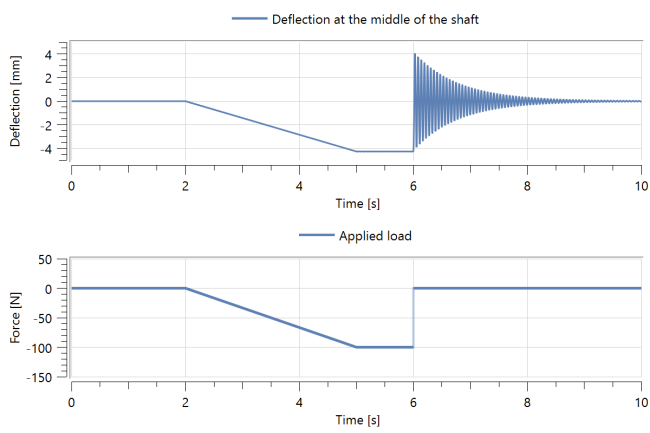
Figure 2: Applied force and vertical deflections at the middle of the shaft.
Figure 3 shows a peak at 18 Hz, corresponding to 1080 rpm. A standard engine revolution range goes from 600 to 1200 RPM at idle and from 6000 to 7000 RPM at maximum speed. This explains why cars typically vibrate more while idling.
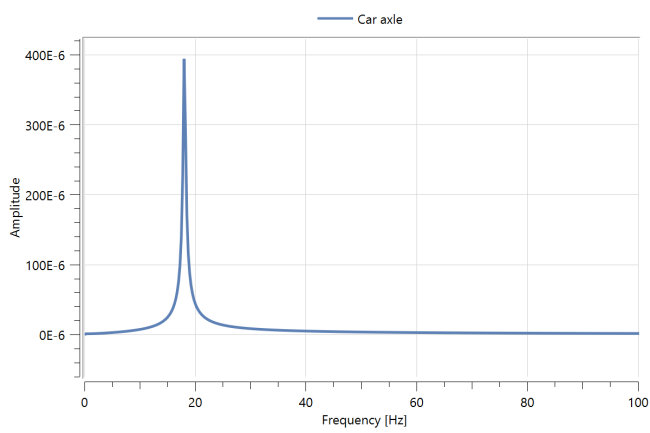 Figure 3: FFT of the shaft deflections.
Figure 3: FFT of the shaft deflections.
Components (6)
| world |
Type: World Description: World coordinate system + gravity field + default animation definition |
|
|---|---|---|
| force |
Type: Force Description: Class that can apply forces along x, y and z axes with a defined interval and amplitude |
|
| shaftLeft |
Type: CylindricalBeam Description: Class with a flexible cylindrical beam |
|
| shaftRight |
Type: CylindricalBeam Description: Class with a flexible cylindrical beam |
|
| pinnedLeft |
Type: PinnedDriveEnd Description: Component that can act as a pinned drive end to a beam, containing different options |
|
| pinnedRight |
Type: PinnedNonDriveEnd Description: Component that can act as a pinned non-drive end to a beam, containing different options |

